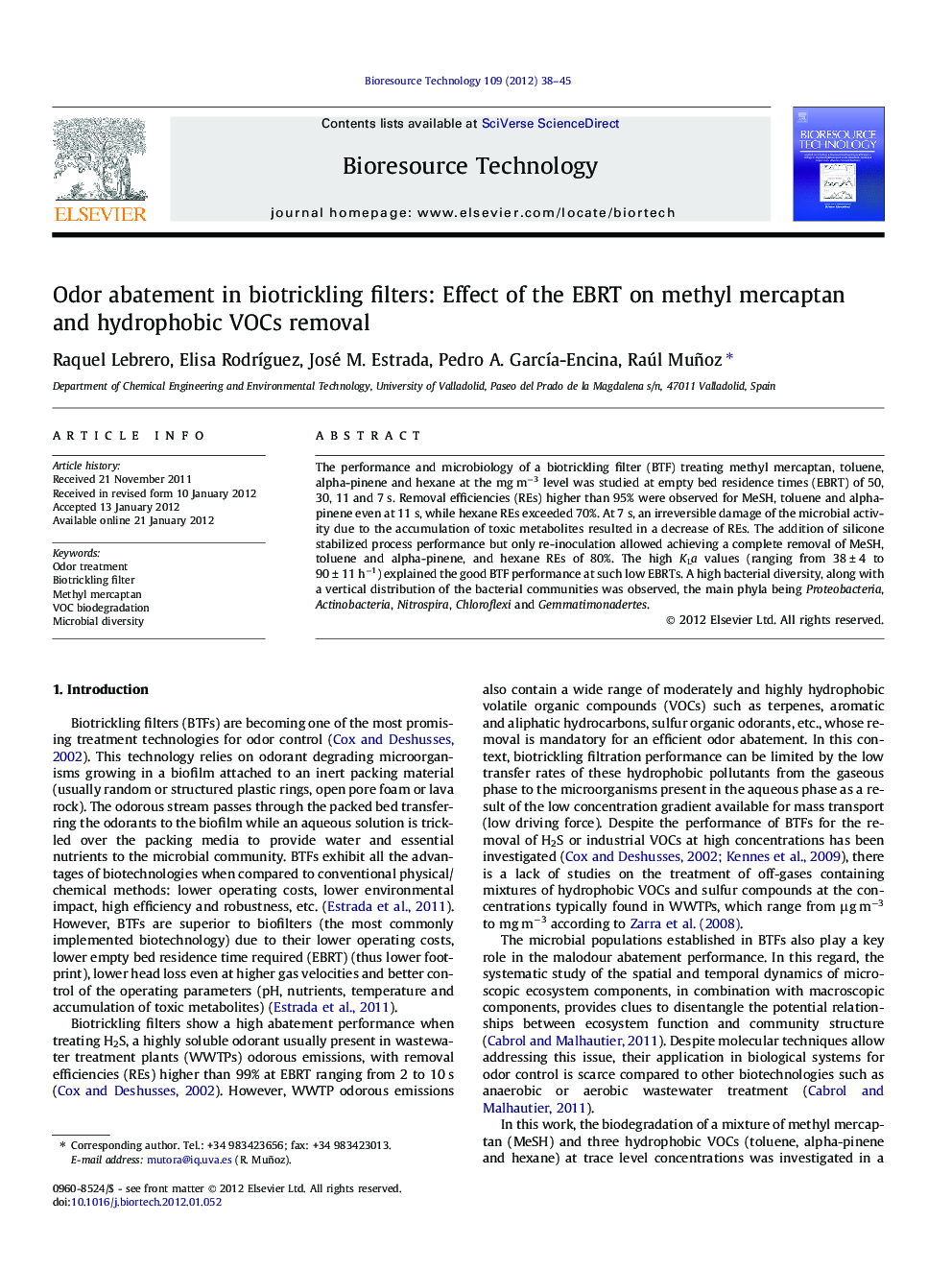| Article ID | Journal | Published Year | Pages | File Type |
|---|---|---|---|---|
| 681611 | Bioresource Technology | 2012 | 8 Pages |
The performance and microbiology of a biotrickling filter (BTF) treating methyl mercaptan, toluene, alpha-pinene and hexane at the mg m−3 level was studied at empty bed residence times (EBRT) of 50, 30, 11 and 7 s. Removal efficiencies (REs) higher than 95% were observed for MeSH, toluene and alpha-pinene even at 11 s, while hexane REs exceeded 70%. At 7 s, an irreversible damage of the microbial activity due to the accumulation of toxic metabolites resulted in a decrease of REs. The addition of silicone stabilized process performance but only re-inoculation allowed achieving a complete removal of MeSH, toluene and alpha-pinene, and hexane REs of 80%. The high KLa values (ranging from 38 ± 4 to 90 ± 11 h−1) explained the good BTF performance at such low EBRTs. A high bacterial diversity, along with a vertical distribution of the bacterial communities was observed, the main phyla being Proteobacteria, Actinobacteria, Nitrospira, Chloroflexi and Gemmatimonadertes.
► Biotrickling filters are a robust and efficient technology for odor treatment. ► REs >99% were obtained for methyl mercaptan and the moderately hydrophobic VOCs. ► Hexane removal efficiencies >80% were achieved at an EBRT of 7 s. ► Accumulation of toxic metabolites can damage the microbial communities irreversible. ► Despite the limited C fed to the system, a high microbial diversity was observed.
